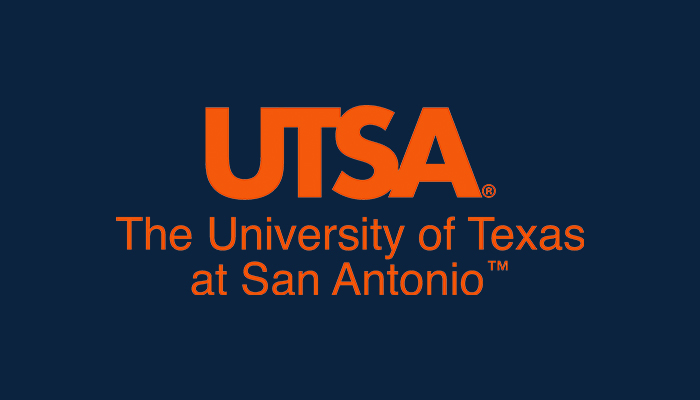
5 Things Every Leader Needs to Know About Student Success Analytics
Share this Post
Moving the needle on student success requires more than simply referencing data. The most successful higher ed leaders incorporate actionable analytics approaches in their daily work and across their broader institutional culture to drive positive student outcomes and reach their goals.
Dr. Linda Baer, strategic consultant, and Donald M. Norris, President at Strategic Initiatives, Inc., shared insights from their white paper “What Every Leader Needs to Know about Student Success Analytics” at Civitas Learning’s Leadership Summit. The paper explores student success initiatives across the United States. And identifies a growing gap between institutions that effectively use analytics to increase student success and those that do not.
“There is a visible shift from using analytics solely to report what has happened as with the performance metrics gleaned from descriptive and diagnostic analytics, to the more insightful and actionable insights and foresight provided by predictive and prescriptive analytics.”
—Don Norris, President, Strategic Initiatives, Inc.
Shifting from Descriptive Analytics to Actionable Analytics
The most effective leaders have shifted away from focusing on descriptive and diagnostic analytics to report what has happened. Instead, they use a wide range of actionable analytics, such as LMS engagement, in-progress grades, change in persistence likelihood, and completion predictions, to influence what could happen for the better.
“There is a visible shift from using analytics solely to report what has happened as with the performance metrics gleaned from descriptive and diagnostic analytics, to the more insightful and actionable insights and foresight provided by predictive and prescriptive analytics,” said Don Norris.
Norris and Baer sum up the difference in these different types of analytics as follows:
| Descriptive Analytics | What has happened? |
| Diagnostic Analytics | Why did it happen? |
| Predictive Analytics | What will happen if past trends and current behaviors continue? |
| Prescriptive Analytics | What is the best that can happen and how can we make it so? |
“Our communities and our society need more educated people than ever before in history, and yet they are admitting more students than ever before who are deemed to be at-risk,” said Baer. “Fortunately, today, with the growing movement in predictive analytics, institutions can use analytics and modeling to bring a more focused lens and discover where and when specific interventions can truly make a difference.”
The good news, she said, is that ample data is available. “The bad news is the gap between those using analytics well and those not committing sufficient energy has widened, and most institutions now lag behind the rising standards of analytics best practices,” said Baer.
“The institutions measurably increasing persistence and graduation are working to connect the dots – pulling the various initiatives and pieces together to create an end-to-end system or process spanning the entire student life cycle.”
—Donald M. Norris, President at Strategic Initiatives, Inc.
Get Data-Informed Strategies to Your Inbox
Create Cross-functional Strategies that Span the Student Life Cycle
The difference between those improving student outcomes and those lagging behind does not solely depend on the budget or resources available to invest in student success analytics. It also depends on how institutions collaborate to support students and reach institutional goals.
“Student analytics work has, up until quite recently, been fragmented and siloed, at best,” said Norris. “The institutions winning at this by measurably increasing persistence and graduation are working to connect the dots – pulling the various initiatives and pieces together to create an end-to-end system or process spanning the entire student life cycle.” Cross-functional teams are essential to these efforts, and the authors cite many highly effective examples.
“We looked at Aspen Prize winners that were using analytics well to discover commonalities,” said Baer, “and it’s obvious the important role courageous leaders play. The fundamental difference prize-winning colleges have from other institutions is not necessarily resources, according to Baer. “The winning colleges have courageous leaders willing to take the bold moves needed to expose the insights yielded by analysis that are difficult, uncomfortable, or even embarrassing at first to acknowledge,” she said. They build a culture that supports and nurtures data-informed decision-making and action in cross-functional teams.
UTSA Achieves 16% Retention Lift with Data-Activated Student Support Ecosystem
Build a Culture of Analytics by Investing in Data Literacy
One common mistake leaders make is failing to invest in data and analytics professional development. Even if leaders acknowledge that data and analytics are important, they often don’t take the necessary steps to ensure stakeholders understand how to use and apply them.
Baer suggests that once leaders acknowledge that data and analytics are important, they must commit to building out their institutional capacity for analytics use. They need to determine if there are people who can do analytics work on campus or if they could up-skill some people with short course training or longer certificates and degrees. Campuses can also work with partners to expand capacity with consultants or scale involvement and application with student success solutions.
“The single most important thing is to start – start building a culture committed to analytics, committed to the truth, committed to leaning into student success,” said Baer. “A small college with limited resources can begin by learning from peers and exploring best practices, then form collaborations or consortiums to buy into economies of scale. They can build capacity by partnering with companies like Civitas Learning that bring in intellectual talent that would be cost-prohibitive for the institutions to add as full-time employees.”
Also, Baer suggests for those institutions with teams already using descriptive analytics, an important next step is to expand their skill set to include predictive analytics in order to optimize their student success work fully.
Invest in Thoughtful Technology Change Management
The most successful institutions never settle for the status quo but always strive to do better for their students. They understand that impactful change takes investing in people and tools that can support the implementation of effective strategies and initiatives to improve student success. And they know that change management is an ongoing process that requires regular assessment to identify improvement opportunities.
According to Baer, institutions at the beginning of data-activated student success work are often reluctant to begin because they fear their data being insufficient or flawed. “In fact, it often is flawed or messy,” said Baer. “But as campuses use their data in this work, the data actually improve through scrutiny and cleansing, so the gains become exponential once an institution starts down this path.”
“By leveraging analytics and data science, leading-edge institutions are raising their aspirations to truly “optimize’ student success for individuals or cohorts.”
—Dr. Linda Baer
“The institutions leading in this work often utilize a change management process John Kotter has developed and proven successful. The process deal with complex, cross-cutting issues that defy management through traditional organizational hierarchies,” said Norris, who cites Kotter’s award-winning Eight Steps Change Process as one of a long list of valuable resources shared in the white paper.
Common Mistakes to Avoid in Technology Change Management
Mitigate Student Risk with Analytics Based Interventions
Baer and Norris provide a useful seven-dimension rubric that leading institutions use to reduce, manage and/or mitigate risk to optimize student success. The interventions they share effectively reduce deviation from successful pathways, steer learners toward proven pathways, and add opportunities for career and employment considerations early in the student pathway and throughout the student journey.
These dimensions include:
- Managing the Student Pipeline
- Eliminate Bottlenecks and Barriers
- Dynamic Interventions to Address Risky Behavior
- Leverage Individual Planning and Advising for Student Success (iPASS)
- Next-Gen Learning
- Big Data/Big Science
- Academic and Employability Success
For each dimension, the authors explore the interventions in play and the risks mitigated by the leading institutions they studied. For example, they list iPASS interventions, including individual guided pathway planning; interventions when learners deviate from the success paths as illuminated by predictive analytics; monitoring progress/risky behavior in the full spectrum of curricular and co-curricular areas and intervening when necessary; and combining best practice theory with data science-driven interventions.
Improving Higher Education Student Success Analytics Use
Norris quickly points out that student success analytics is a long-term investment. Even those institutions achieving rapid gains through committed work in analytics and partnerships with solution providers view building organizational capacity for analytics as a long-term campaign. It requires evolving from a culture of reporting to a culture of evidence and finally on to a culture of student success improvement.
“Our research shows us that institutions need help in advancing their student success analytics,” said Norris. “They need to assemble working groups from across the institution that functions together to optimize institutional strategy.“ He says this can initially cause challenges for universities and colleges that historically have fragmented their efforts. Collaborations and system-wide frameworks can ‘connect the dots’ that reduce redundancy, share perspectives and insights, and best leverage their efforts.
The paper suggests many activities, approaches, and constructs leadership teams can adopt to optimize student success. These suggested strategies work to close the widening gap between those institutions seeing measurable gains in student success and those that aren’t.





